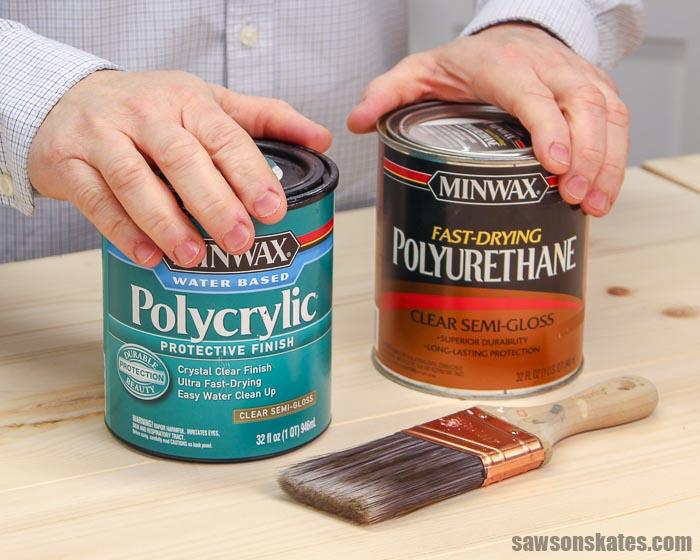What’s the Difference? Polycrylic vs Polyurethane
Photo: amazon.com
It’s hard to beat the natural beauty of wood; it has a depth, glow, and interest that few manmade materials can match. But left unsealed, wood is prone to damage from moisture, heat, and heavy usage. To prevent that, most woodworking projects—from newly refinished flooring to hand-crafted benches—end with a protective top coat, no matter whether the wood is raw, painted, or stained.
Two such wood sealers popular with professional woodworkers are polycrylic and polyurethane. But their similar names, purposes, and application can confuse many novice do-it-yourselfers who head to the hardware store and see them side by side, sometimes even produced by the same manufacturer. Which—if either—of the two is best for sealing furniture? Will either affect the wood’s color? And which is easier to apply?
We’ve outlined the biggest differences between the two wood finishes below and other relevant considerations to help you make a quick, easy decision on polycrylic vs. polyurethane without slowing down your project.
Yes, it’s not quite as cut and dry as oil- vs. water-based sealers. In fact, DIYers have even more options: Consumers will actually find both water-based and oil-based varieties of polyurethane on the home improvement center shelves, in addition to the strictly water-based polycrylic sealers.

Photo: istockphoto.com
Both polyurethane and polycrylic come in satin, gloss, and high-gloss sheens, so you can go as shiny as you’d like to emphasize your wood’s character and craftsmanship. However, note the following differences:
Whether you use polyurethane or polycrylic, you’re sure to get a durable, hard finish that will protect your wooden furniture or floor from mild-to-moderate abuse. But if you really need a sealer that can handle stronger stuff—such as daily, vigorous use or lots of foot traffic—oil-based polyurethane is your best bet. And if your finished piece will be exposed to high temperatures or moisture on a regular basis, oil-based polyurethane is definitely superior.
Photo: istockphoto.com
You have the choice to spray or brush on polyurethane and polycrylic. However, beware the challenge that comes with polycrylic’s runnier consistency; you’ll need to apply thin coats and keep an eye out for drips, then wait the recommended dry time so that you don’t end up with a sticky finish. Plus, because polycrylic dries very quickly to the touch, it’s harder to get an even finish over a large surface area.
While both polyurethane and polycrylic can be applied over water-based or oil-based paints and finishes, you may find that polycrylic doesn’t dry quickly over matte latex paint due to additives in the paint.
Polyurethane is very flammable while wet, so it requires careful storage to prevent a fire. As mentioned earlier, it also has a high VOC count that can irritate your lungs, meaning you’ll need to wear respiratory protection while applying it (although water-based polyurethane is far less potent than the oil-based version). Polycrylic, by contrast, does not have a strong odor and is not nearly as toxic as polyurethane, so you won’t need to don protective gear to apply it.
As it is, polycrylic and polyurethane are good for many of the same projects, including desks, side tables, picture frames, and dressers. If you need a tiebreaker, ask yourself the following when deciding which one to use include:







